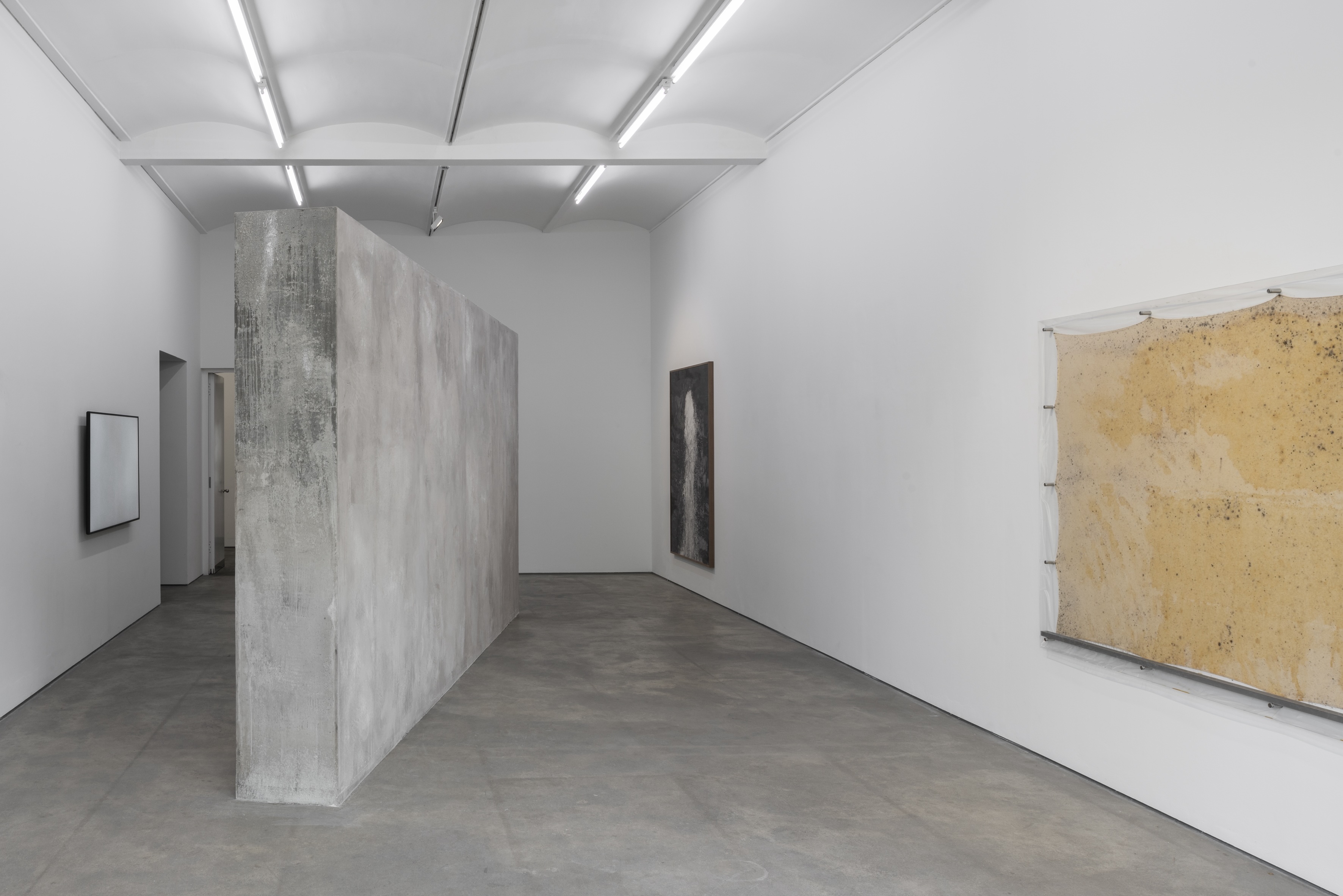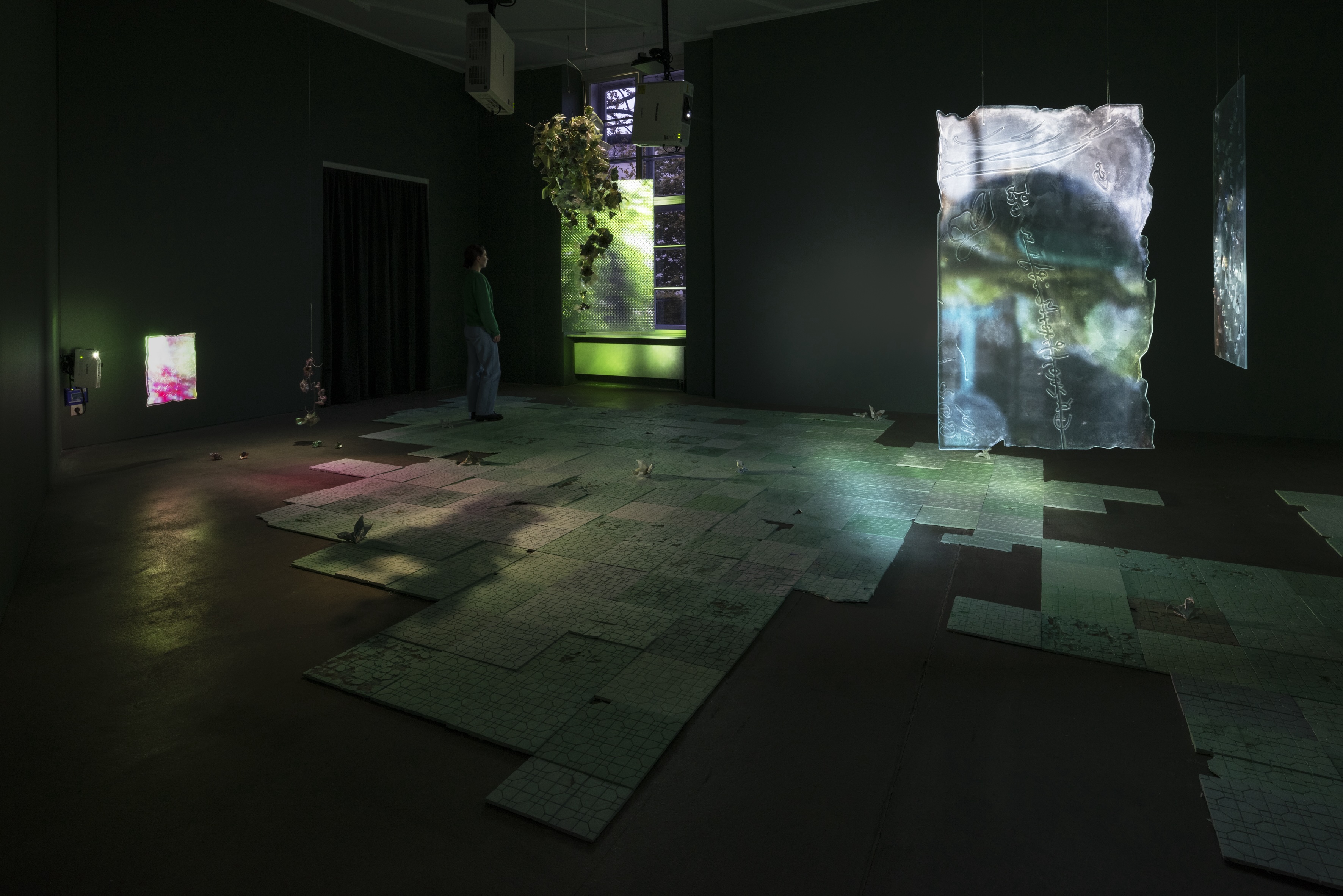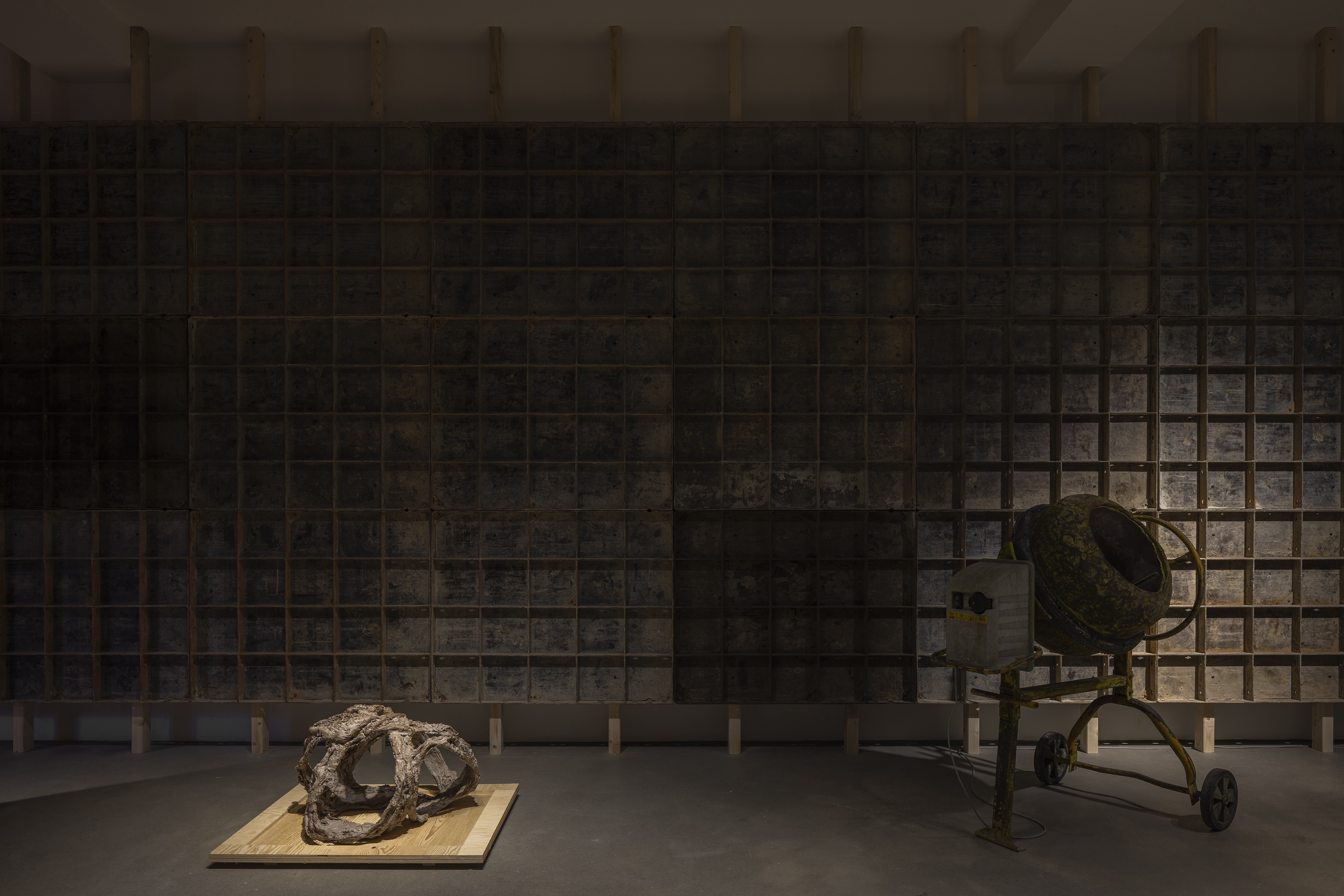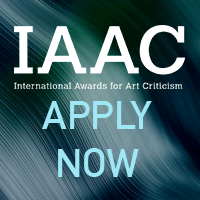Walking the Earth’s Surface in “territory”
By Nora Wölfing

Still from LIU YUJIA’s Mushrooms, 2023, single channel 4K film Color, stereo sound: 13 min 14 sec. Courtesy the artist.
Apr 27–Jul 27
territory
Sprüth Magers
Berlin
The world is made of textures and fabrics. Some are solid, like soil, earth, stone, and concrete, while others are of more ephemeral and invisible nature, such as scent and microorganisms. Mire Lee, Gala Porras-Kim, Tan Jing, Zhang Ruyi, and Liu Yujia share a mutual interest in these textures and the cultural layers attached to them by collective and individual memory. The group exhibition “territory” interweaved their artworks to create a multivocal comment on migration, memory, and human-nature relationships.

Installation view of GALA PORRAS-KIM’s (middle left) Untitled (Efflorescence), 2018/2024, concrete, salt, 400 × 250 × 100 cm; (far right) Out of an instance of expiration comes a perennial showing, 2022- , propagated spores from the British Museum and potato dextrose agar on muslin, 172 × 300 cm; at "territory," Spruth Magers, Berlin, 2024. Photo by Ingo Kniest. Courtesy Spruth Magers.
Cement and concrete interconnect the exhibition’s individual artworks like a meandering grey thread. Upon entering the gallery’s main exhibition hall, visitors immediately faced a concrete wall by Gala Porras-Kim, titled Untitled (Efflorescence), (2018/24). Its bleak, heavy structure cut through the exhibition space, separating it into two spheres. Its physical presence was reminiscent of heavily guarded borders and forbidden zones, alluding to the exhibition title “territory” and its geopolitical connotation. But Porras-Kim’s wall is set to decay: the concrete is supersaturated in salt, which will slowly deconstruct the seemingly impenetrable structure from the inside. On the other side of the wall, Porras-Kim has “invited” a microorganism to co-produce her artwork Out of an instance of expiration comes a perennial showing (2022– ). The artist collected spores from the British Museum and nourished them on a piece of muslin. As the spores spread across the textile, they created various dotted patterns, altering the artwork day by day. By giving artistic autonomy to this often unliked microorganism, Porras-Kim invites the visitor to reflect upon human artistry versus the power and unhinged beauty of natural creation.

Installation view of TAN JING’s Nook of a Hazy Dream, 2023, glasses, four-channel video: 27 min 13 sec, dimensions variable. Photo by Ingo Kniest. Courtesy the artist and Spruth Magers.
An intriguing scent emanated from Tan Jing’s installation Nook of a Hazy Dream (2023), in which the artist engages with her own family history by basing the fictional character’s story on her grandfather’s lives between Thailand and China through videos and objects. The floor of the darkened space was covered with tiles made of pressed gypsum infused with kaffir leaf, lemongrass, and galangal, which gave off a sweet and bitter scent typical of Thailand. The room was filled with the cracking sound of breaking tiles underneath visitor’s feet, symbolizing the fragility of memory as well as time’s relentless march as the installation changes with each step.

Installation view of LIU YUJIA’s (left) A Darkness Shimmering in the Light, 2023, single channel 4K film, 16mm film transferred to 2K digital video, color, 5.1 surround sound: 64 min 17 sec; (right) Mushrooms, 2023, single channel 4K film, color, stereo sound, 13 min 14 sec. Photo by Ingo Kniest. Courtesy the artist and Spruth Magers.
Liu Yujia’s video Mushrooms (2023) explored the microsphere of fungi. Fungi are often associated with collective thinking and networks, through which a positive and engaged future of planetary cohabitation can be achieved. Throughout the video, the camera stays close to the spores and growing mushrooms and magnifies them to larger-than-human size, thus diminishing the viewers' perspective to those of insects. While Mushrooms induces a nonhuman perspective, A Darkness Shimmering in the Light (2023) sometimes takes a drone's point of view to show the landscape of the northern Chinese frontier region to Russia. In this work, Liu embarks on a journey that examines the beauty of the wilderness while creating a narrative web encompassing mythology and history.

Installation view of MIRE LEE‘s Look, I’m a fountain of filth raving mad with love, 2024, mixed-media installation, dimensions variable. Photo by Ingo Kniest. Courtesy Spruth Magers.
Mire Lee’s installation Look, I’m a fountain of filth raving mad with love (2024) on the first floor of the gallery looks, smells, and sounds like a construction site stripped bare of its functionality, leaving behind the material debris of concrete, the scent of wet cement, and a sense of futile bustle. On both sides of the room, cement mixers rotated with heavy stones rumbling inside, creating an atmosphere of abandonment in which only the sound of stone against metal remained active. The gray amorphous sculptures Untitled (burlap body piece with many holes) I-III, 2024, displayed on the floor and suspended from the ceiling, emphasized the feeling of unattended leftover produce and highlighted the absence of human labor.

Installation view of ZHANG RUYI’s works at "territory," Spruth Magers, Berlin, 2024. Photo by Ingo Kniest. Courtesy Spruth Magers.
Near one of the gallery windows facing Berlin’s Monbijou Park, Zhang Ruyi’s hybrid sculptures, half-cactus and half-construction debris, cast in monochrome gray, created an irritating contrast to the moving leaves in the spring breeze outside. These strange and timeless indoor plants function as “modern fossils” in Individual Plant-VG (2022) and Modern Fossil series (2022–23), as they imagine a future where hybrid plants have entered the techno-fossil era by seamlessly merging nature and human-made objects. Displayed on the wood-paneled walls, Zhang’s collages made from everyday materials—aluminum foil, sandpaper, supermarket packaging material, and adhesive tape—created a visual and intellectual link to urban living and the ephemeral remnants of modern life.
The exhibition's curator, Sprüth Magers's Asia director Shi-ne Oh, who was born in Korea and shares the diasporic experience of the artists, ensured that this was a vibrant dialogue of shared spaces in a world full of contested territories. The artworks communicated with each other through recurring material, sound, and scent and created a narrative framework in which the individual artworks gained context, reference, and momentum. In the end, the aggressive term “territory” became fluid and multidimensional.
Nora Wölfing is an art historian, researcher, and writer specializing in contemporary art from the Sinophone region.








